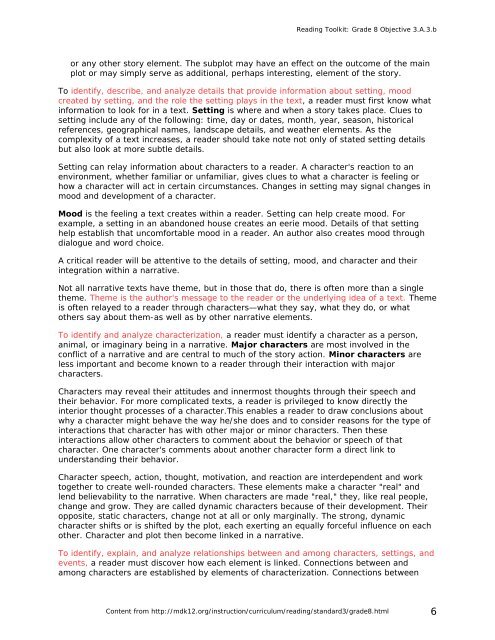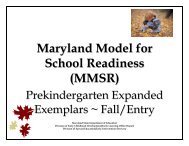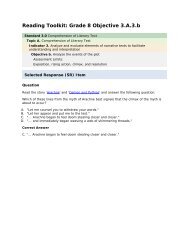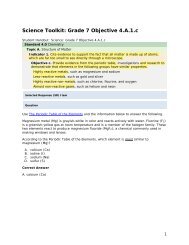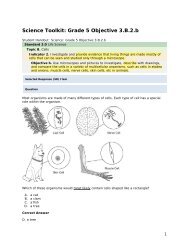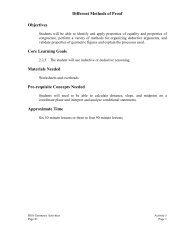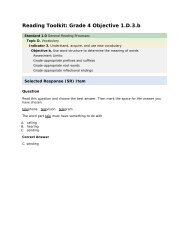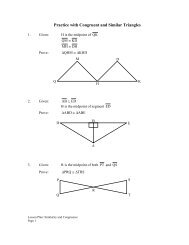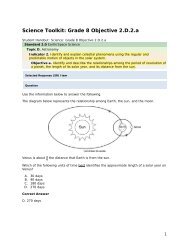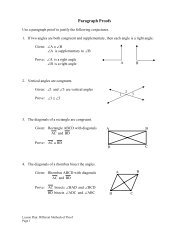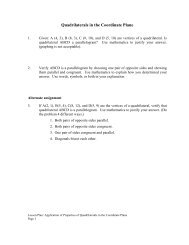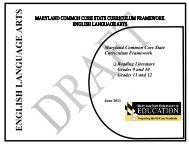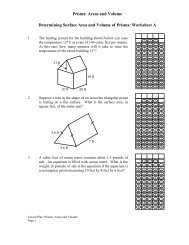Reading grade 8 3.A.3.b - mdk12
Reading grade 8 3.A.3.b - mdk12
Reading grade 8 3.A.3.b - mdk12
Create successful ePaper yourself
Turn your PDF publications into a flip-book with our unique Google optimized e-Paper software.
<strong>Reading</strong> Toolkit: Grade 8 Objective <strong>3.A.3.b</strong><br />
or any other story element. The subplot may have an effect on the outcome of the main<br />
plot or may simply serve as additional, perhaps interesting, element of the story.<br />
To identify, describe, and analyze details that provide information about setting, mood<br />
created by setting, and the role the setting plays in the text, a reader must first know what<br />
information to look for in a text. Setting is where and when a story takes place. Clues to<br />
setting include any of the following: time, day or dates, month, year, season, historical<br />
references, geographical names, landscape details, and weather elements. As the<br />
complexity of a text increases, a reader should take note not only of stated setting details<br />
but also look at more subtle details.<br />
Setting can relay information about characters to a reader. A character's reaction to an<br />
environment, whether familiar or unfamiliar, gives clues to what a character is feeling or<br />
how a character will act in certain circumstances. Changes in setting may signal changes in<br />
mood and development of a character.<br />
Mood is the feeling a text creates within a reader. Setting can help create mood. For<br />
example, a setting in an abandoned house creates an eerie mood. Details of that setting<br />
help establish that uncomfortable mood in a reader. An author also creates mood through<br />
dialogue and word choice.<br />
A critical reader will be attentive to the details of setting, mood, and character and their<br />
integration within a narrative.<br />
Not all narrative texts have theme, but in those that do, there is often more than a single<br />
theme. Theme is the author's message to the reader or the underlying idea of a text. Theme<br />
is often relayed to a reader through characters—what they say, what they do, or what<br />
others say about them-as well as by other narrative elements.<br />
To identify and analyze characterization, a reader must identify a character as a person,<br />
animal, or imaginary being in a narrative. Major characters are most involved in the<br />
conflict of a narrative and are central to much of the story action. Minor characters are<br />
less important and become known to a reader through their interaction with major<br />
characters.<br />
Characters may reveal their attitudes and innermost thoughts through their speech and<br />
their behavior. For more complicated texts, a reader is privileged to know directly the<br />
interior thought processes of a character.This enables a reader to draw conclusions about<br />
why a character might behave the way he/she does and to consider reasons for the type of<br />
interactions that character has with other major or minor characters. Then these<br />
interactions allow other characters to comment about the behavior or speech of that<br />
character. One character's comments about another character form a direct link to<br />
understanding their behavior.<br />
Character speech, action, thought, motivation, and reaction are interdependent and work<br />
together to create well-rounded characters. These elements make a character "real" and<br />
lend believability to the narrative. When characters are made "real," they, like real people,<br />
change and grow. They are called dynamic characters because of their development. Their<br />
opposite, static characters, change not at all or only marginally. The strong, dynamic<br />
character shifts or is shifted by the plot, each exerting an equally forceful influence on each<br />
other. Character and plot then become linked in a narrative.<br />
To identify, explain, and analyze relationships between and among characters, settings, and<br />
events, a reader must discover how each element is linked. Connections between and<br />
among characters are established by elements of characterization. Connections between<br />
Content from http://<strong>mdk12</strong>.org/instruction/curriculum/reading/standard3/<strong>grade</strong>8.html 6


